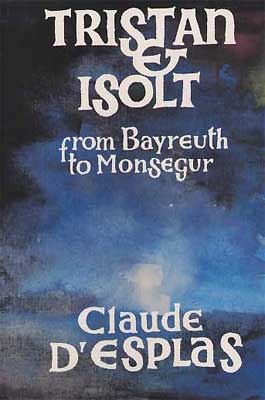 'Ein man ein wip, ein wip ein man...'
( a man a woman, a woman a man)
The most beautiful German love epic in the High Middle Ages (19,548 lines) is
supposed to have been written down from about 1205 to 1215. It is the rich fruit of the small
amount of interest Meister Gottfried showed in the insipid, conventional stories of his time:
Thomas alone finds grace in the eyes of the author and of his two immediate successors: Ulrich
von Türheim (c. 1230) and Heinrich von Freiberg (c. 1290), even if Gottfried - he explains this
in his prologue - feels compelled to adapt the poem of Thomas von Britanje (Thomas of
Brittany) as he calls him.
In the same way as Beroul claimed to have seen the written text of the story of Tristran,
and Thomas rebels against his literary rivals, Meister Gottfried criticises the competing versions
for their lack of verisimilitude, but finds praise for Thomas's poem which he considers
consistent with truth. What is truth? Gottfried does not wait for an answer.
From the beginning and throughout, the Poet of Strassburg idealises his characters.
They dazzle their entourage by their beauty as well as by their artistic and cultural refinement:
Isolt, the marvel of Ireland (daz wunder von Irlant), adorned in French fashion (in dem snite
von Franze), rises like the sun, her mother, the radiant dawn, holding her by her hand. Tristan is
her equal in other respects: well-versed in the laws of courtliness and 'ameir' (love), no sooner
on shore in Dublin, he teaches Isolt the art of writing, the handling of string instruments, chess,
and somewhat astonishingly, Latin. The jealous courtiers, among them the Dwarf, himself an
expert in the art of occult sciences and not exactly disinterested in Isolt, add that Tristan
achieves his ends through necromancy.
As in the versions preceding Gottfried's, Tristan and Isolt drink the herbal wine, and
from that moment, love, this thief of hearts, allegorically plants its victorious colours, and drags
the lovers triumphantly under its yoke. In other words, and without further delay the 'defeated
girl abandons herself with body and soul to love and to the Man'. Tristan, like Adam before
him, bites into the apple, with the well-known consequences, in this famous scene in the
orchard where King Marc discovers the lovers in a tight embrace and peacefully asleep - after
efforts not specified by Gottfried. This scene is of great artistic simplicity and does not exist in
Thomas's Tristan.
The language Gottfried uses, breaking away from the conventional speech of his day,
tries to express the unspeakable by freeing itself progressively from logical and syntactical
principles, similar to that falcon, with which Gottfried compares Isolt the Fair: The bird (a
present that St Boniface made to the Anglo-Saxon king Ethelbald?) gazes into the depth of the
azure before piercing the skies created to carry him.
But, this is a different tenso, comparable to the 'Debate between two ladies about the
pastime with dogs and birds' enjoyed by the famous Cretin, cantor at the Sainte-Chapelle.
It is just as well to leave it to music to express what cannot be put into words: centuries
will pass before it is accomplished.
|
